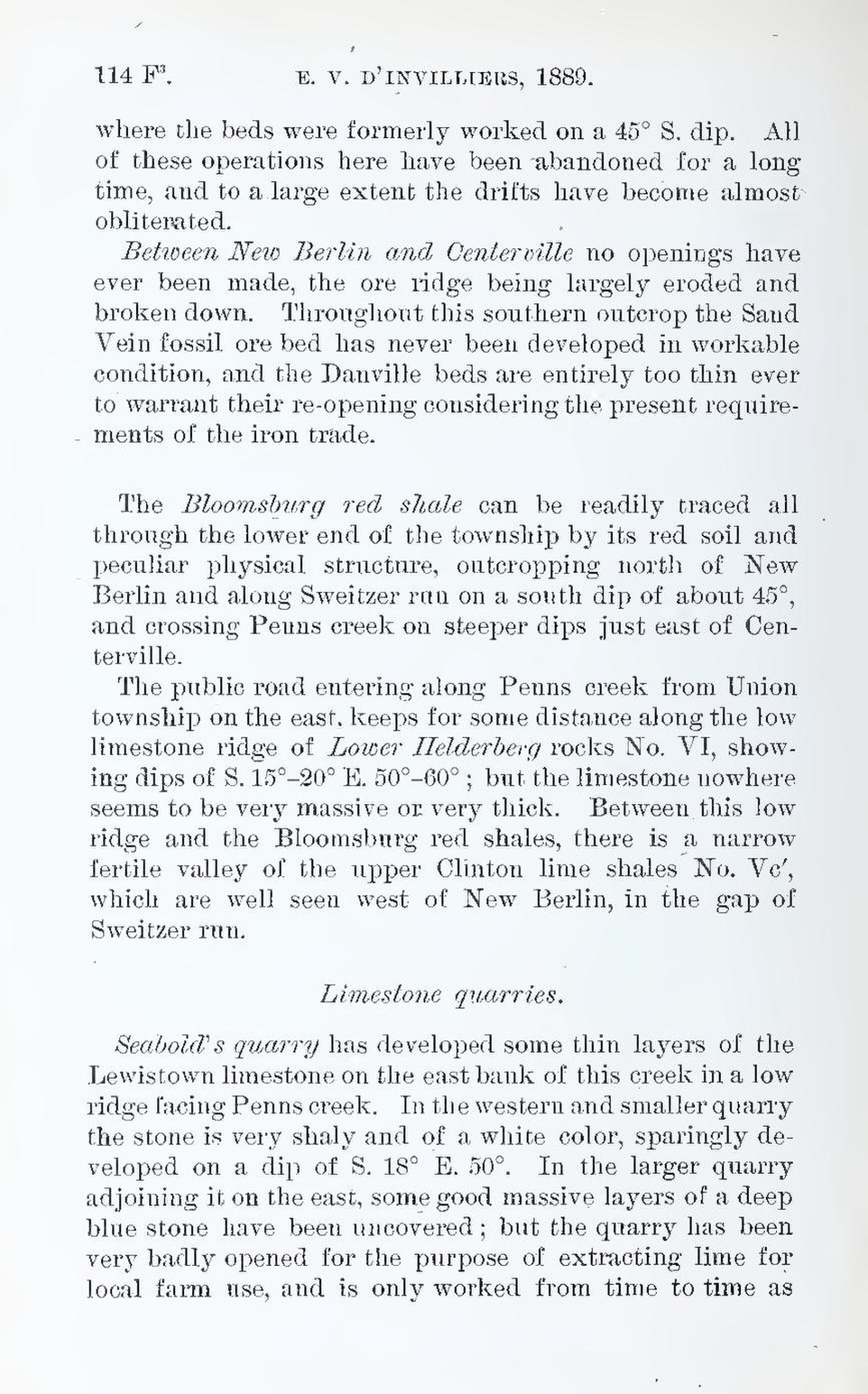where the beds were formerly worked on a 45° S. dip. All of these operations here have been abandoned for a long time, and to a large extent the drifts have become almost obliterated.
Between New Berlin and Centerville no openings have ever been made, the ore ridge being largely eroded and broken down. Throughout this southern outcrop the Sand Vein fossil ore bed has never been developed in workable condition, and the Danville beds are entirely too thin ever to warrant their re-opening considering the present requirements of the iron trade.
The Bloomsburg red shale can be readily traced all through the lower end of the township by its red soil and peculiar physical structure, outcropping north of New Berlin and along Sweitzer run on a south dip of about 45°, and crossing Penns creek on steeper dips just east of Centerville.
The public road entering along Penns creek from Union township on the east, keeps for some distance along the low limestone ridge of Lower Helderberg rocks No. VI, showing dips of S. 15°–20° E. 50°–60°; but the limestone nowhere seems to be very massive or very thick. Between this low ridge and the Bloomsburg red shales, there is a narrow fertile valley of the upper Clinton lime shales No. Vc′, which are well seen west of New Berlin, in the gap of Sweitzer run.
Limestone quarries.
Seabold’s quarry has developed some thin layers of the Lewistown limestone on the east bank of this creek in a low ridge facing Penns creek. In the western and smaller quarry the stone is very shaly and of a white color, sparingly developed on a dip of S. 18° E. 50°. In the larger quarry adjoining it on the east, some good massive layers of a deep blue stone have been uncovered; but the quarry has been very badly opened for the purpose of extracting lime for local farm use, and is only worked from time to time as
